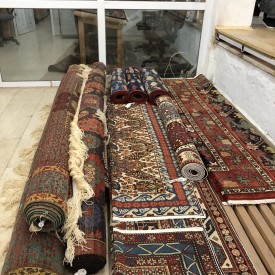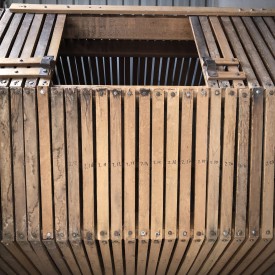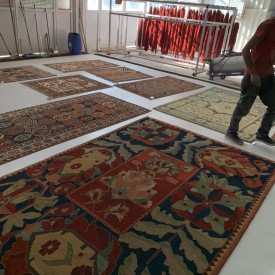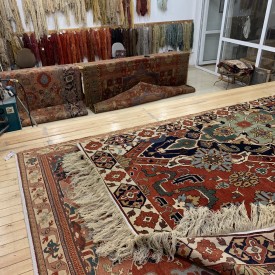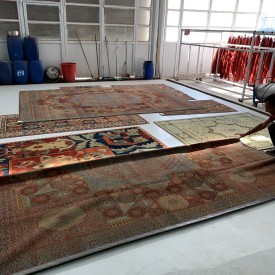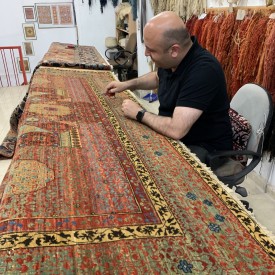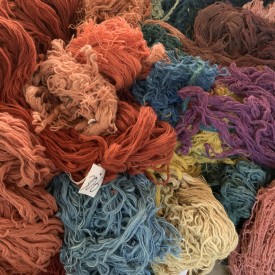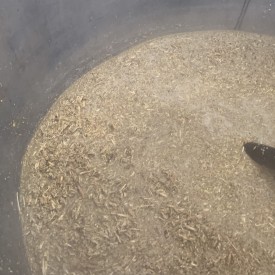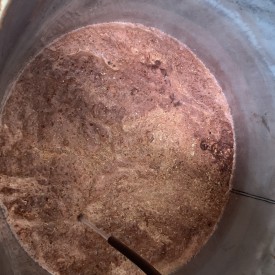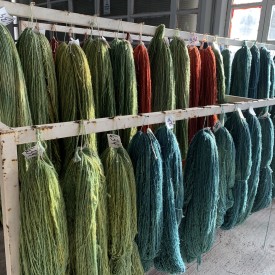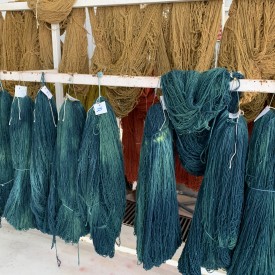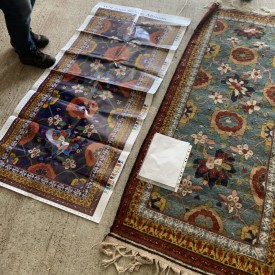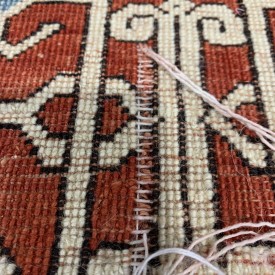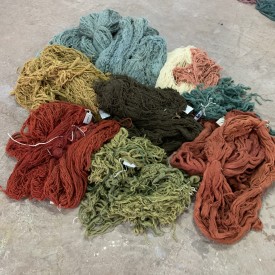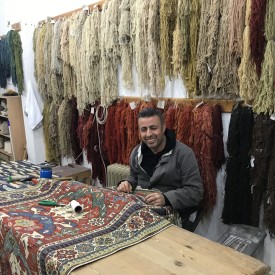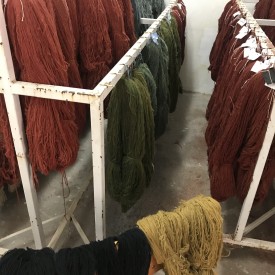In the complete weaving process of the carpet, about %40 - %50 of labor is spent on all pre-weaving preparations and after-weaving processes (burning, dusting, washing, etc.), and %50 - %60 of labor is spent on weaving. If the threads were not hand-spun and chemical dyes were used, this labor would be reduced in mass production, and weaving times and costs could be kept low. There is a long way to go for a carpet that has finished weaving. After weaving, all the processes are according to our guidelines and are followed by an experienced team. Producing a carpet in the most traditional and natural ways is a matter of our responsibility towards the environment and our mission. This also adds extended life to your carpet beyond having a perfect carpet.
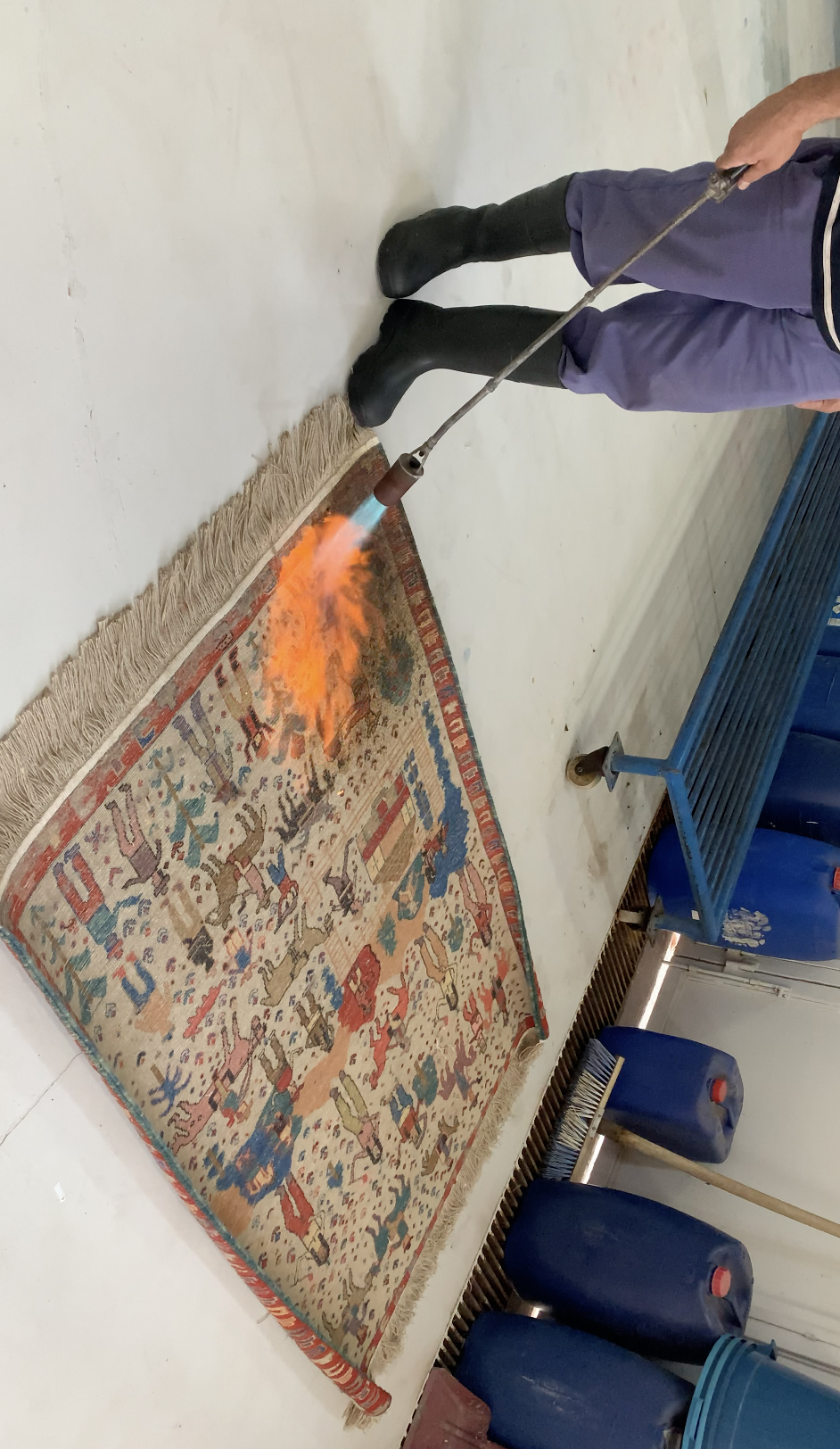 Photo: Burning process, the backside of the rug, 2020 Malatya
Photo: Burning process, the backside of the rug, 2020 Malatya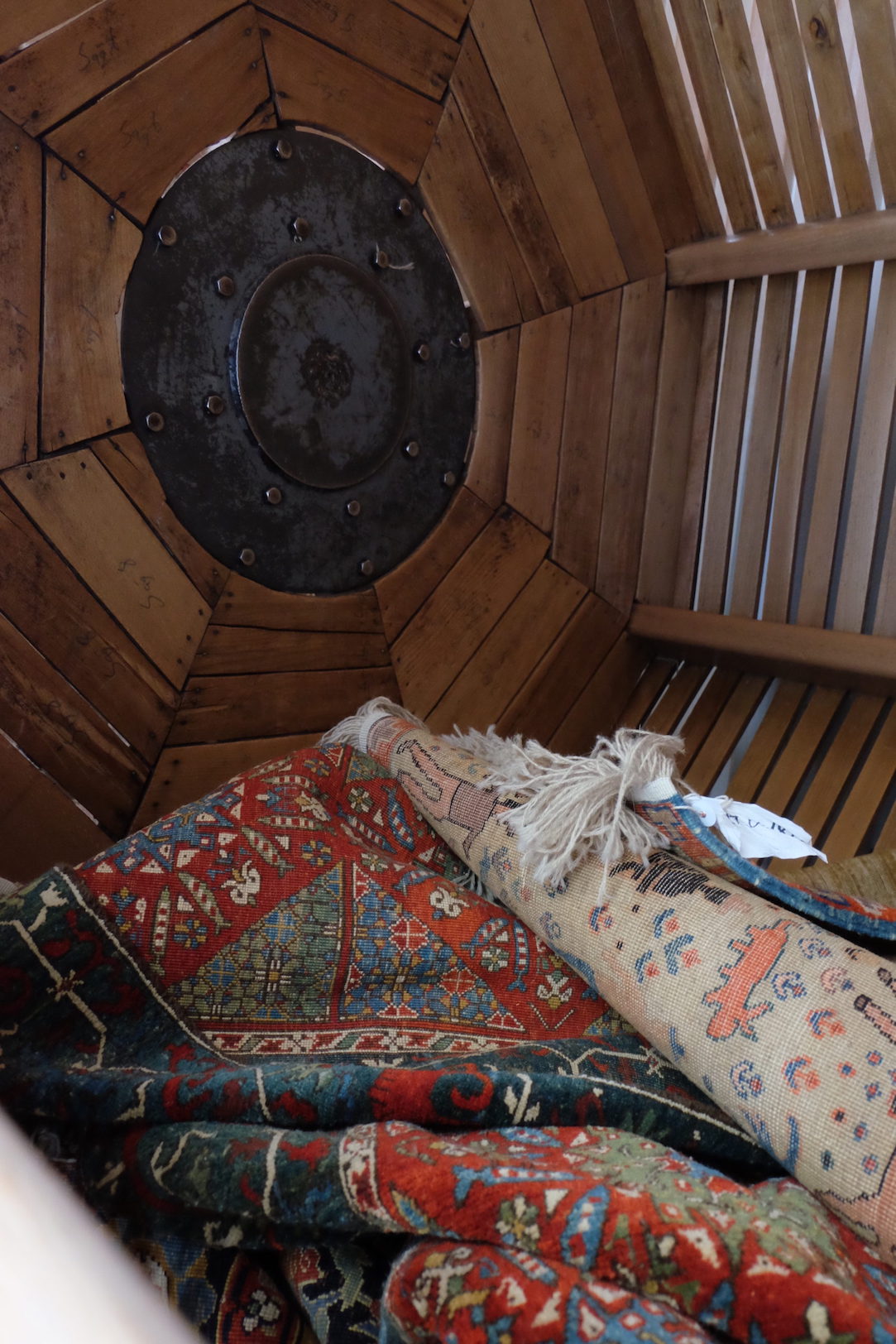 Photo: Inside of drum duster, 2020 Malatya
Photo: Inside of drum duster, 2020 MalatyaAfter the first inspection of incoming carpets from weaving workshops, we perform the incense and burning processes as a first step to removing the fuzz on the backside of the rug. Experts should always carry out the process.
The process of removing dust provides convenience before washing. The dust that does not come out during the washing process can be removed this way, which is an important process.
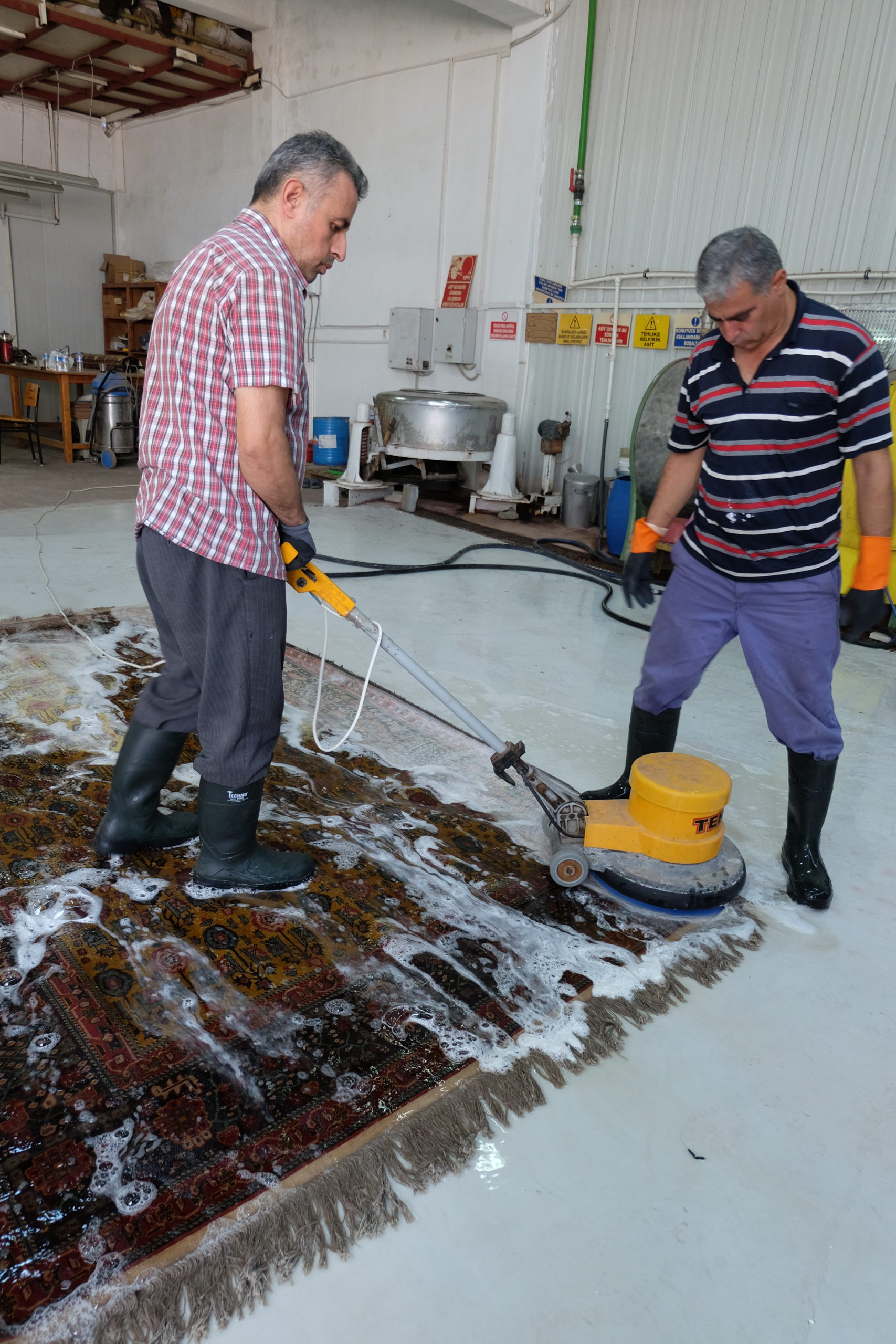 Photo: Washing Kurdish rug, 2020 Malatya
Photo: Washing Kurdish rug, 2020 Malatya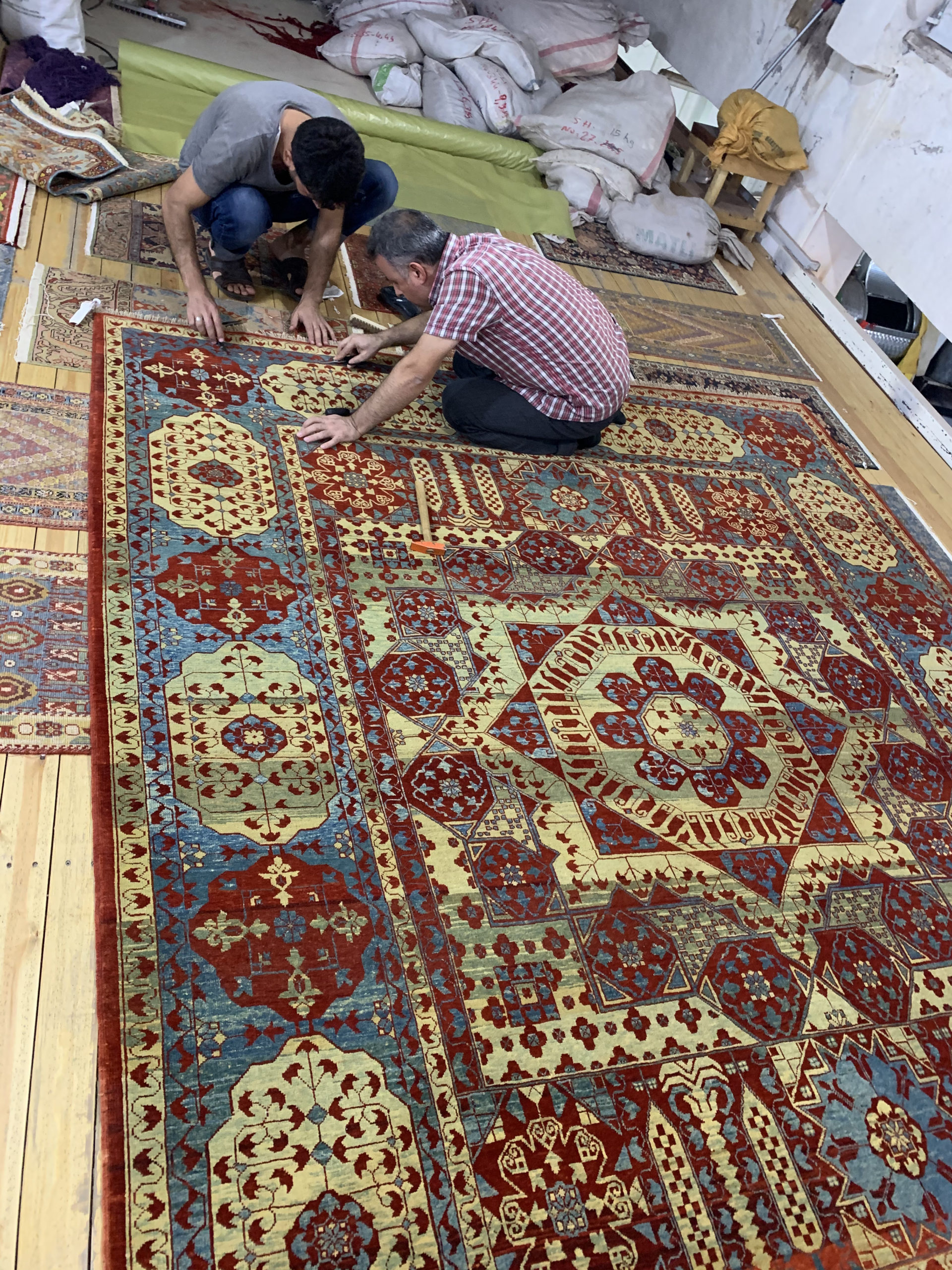 Photo: Final touches for Mamluk rug, 2021 Malatya
Photo: Final touches for Mamluk rug, 2021 MalatyaAfter the burning and dusting processes, we completed the first washing of the carpet. According to the type of carpet, we have unique washing recipes, and washing is carried out according to instructions by the expert team. After the first washing, carpets are waiting to dry. After the inspections made after the first washing, we carried out a second washing to have the carpet as in the last state according to size, color, etc.
After the second wash, the size irregularities of the carpets are checked. After this process, we do a weeding process to remove weeds related to natural dye; it's the final step of cleaning and washing the carpet.
After the second wash and weeding, the size irregularities of the carpets are checked. Accordingly, we do the stretching and pulling methods, which can take two weeks to one month, depending on the type of carpet. The carpet is stretched in this process, and we wait a long time for it to take its final shape. If we had used open weft (non-spun weft), this process would have taken a short time and would have been completed in 1 day, but this process would not have helped the carpet to be durable for many years.
In the final control area, weaving defects are checked millimeter by millimeter, and maintenance and repair are carried out. The fringes are cut and blind stitched, making it as solid as possible. After these works, the final touch-ups are made and photographed after giving the final control approval. Details such as finishing operations, maintenance repairs, and washing information are entered into the ERP system. Then, it is packed and shipped to the appropriate location.
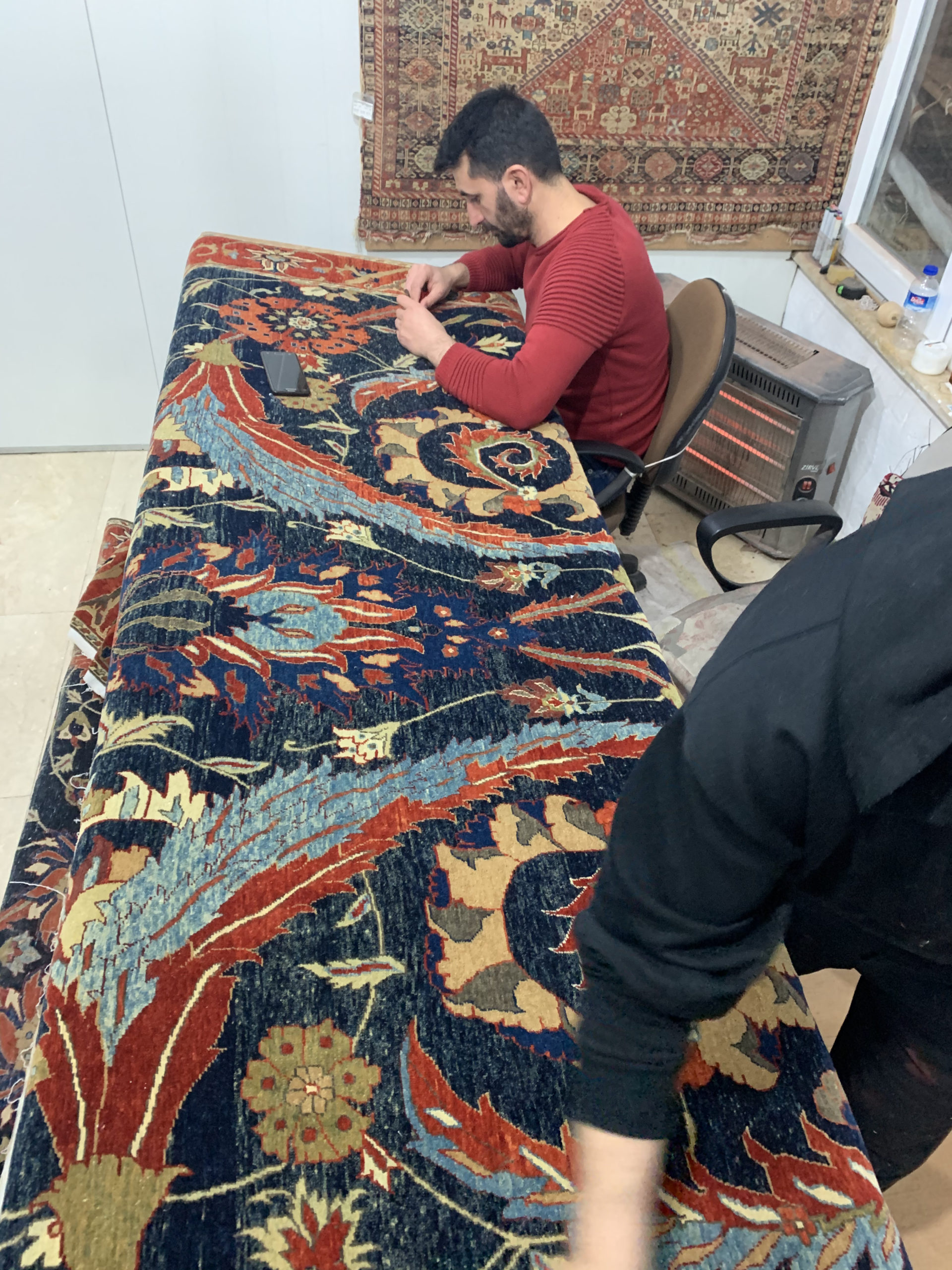 Photo: Final touches for Kirman rug, 2021 Malatya
Photo: Final touches for Kirman rug, 2021 MalatyaPhoto Album
We would like to share the culture of traditional weaving techniques with our family, who are the main architects of these unique works that we have told you about on these pages.

